Alaskan Klee-Kai: breed description and cultivation
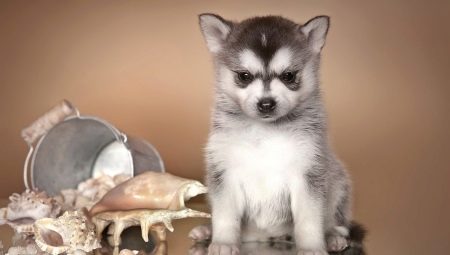
The Mini Husky, or Alaskan Klee Kai, is a unique breed of miniature dog. They managed to preserve all the positive aspects of the husky and add decorativeness to the breed from dwarf dogs. Despite the simplicity of the name, this breed is considered the most successful of all bred over the past century.
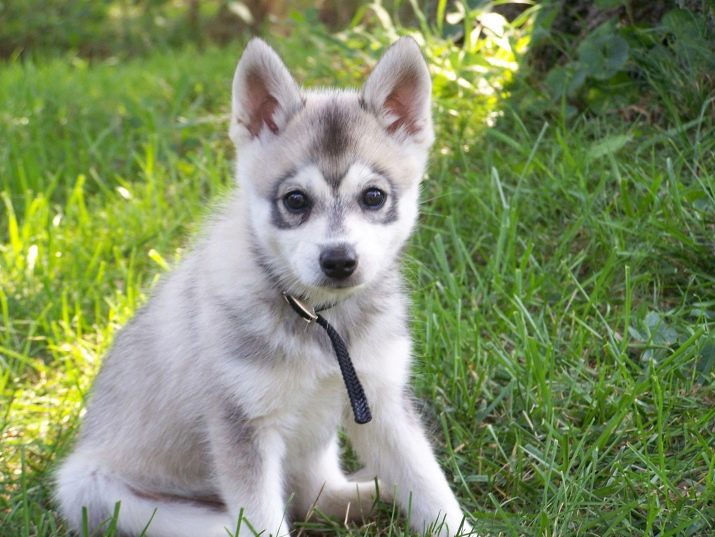
Origin story
The Alaskan Kli-Kai appeared at the dawn of the 19th century. The name of the breed is no coincidence - in the language of the Eskimos "kli-kai" means "little dog".
In the 70s in the United States, a girl named Linda decided to have a husky pet in her house. At that moment, when the pet was still too small, Linda thought that it would be great to have a dwarf copy of the husky. The girl began to carry out her idea with the support of her friend Eileen Gregory. Ladies have spent two decades to get a new breed that has all characteristics of a husky, but small in stature.
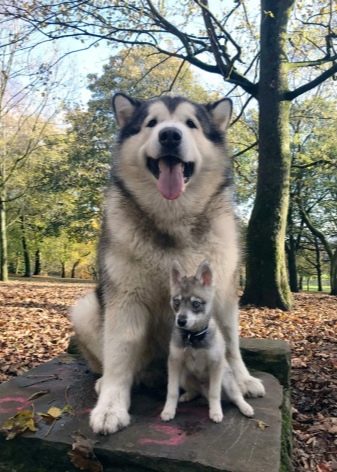
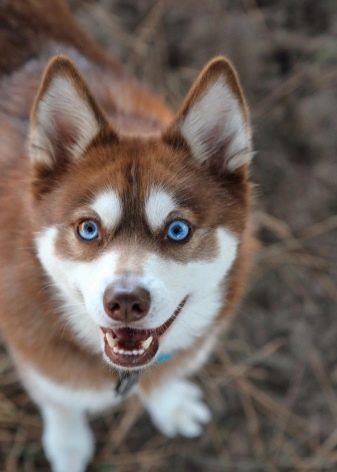
In 1989, the breed was officially exposed. The event was grandiose, the wide scale of the event allowed the new dogs to find loyal fans. The end of the 90s marked the final stage of selection. In the same period, the Association of Rare Dog Breeds officially recognized the Alaskan Klee-kai as an independent breed.
How the breeders managed to create a miniature husky is unknown. According to some assumptions, the girls were selecting for the smallest representatives of the husky, crossing them among themselves in order to get the same miniature offspring. Another version speaks of the initial selection with small breeds, because the dwarf husky is vaguely similar to the Pomeranian.
Today it doesn't matter how exactly this work was done, because the result exceeded all expectations. Mini huskies are still rare, but the breed is rapidly gaining popularity among dog lovers and professional breeders.
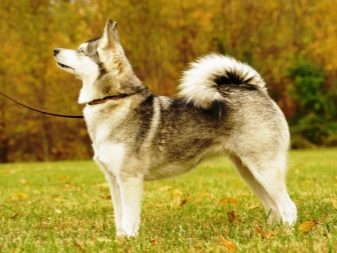
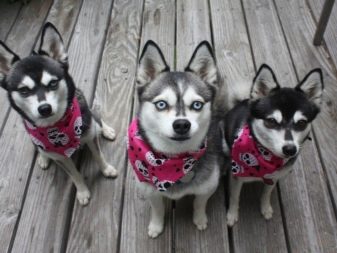
Characteristics of dogs
Today, this miniature dog breed can be divided into 3 growth groups.
- Standard... An adult dog does not grow taller than 43 cm, the weight category is around 10 kilograms.
- Mini. The size of the dog is within 38 cm at the withers or below, the weight is about 7 kilograms.
- Toy or toy. The smallest of all individuals. The height of the animal is no more than 33 cm, weight is no more than 5 kilograms.
When choosing a miniature husky, it is worth considering the characteristics of the breed's exterior.

Description of the external features of the breed.
- Head. The shape of the muzzle is wedge-shaped, without skin folds or sagging of the skin. The muzzle is slightly extended towards the nose. The ears are erect, triangular in shape, wide, set high. Scissor bite, lips close to the jaw. Stroke the mucosa in black and dark brown tones. The eyes are almond-shaped, the color of the iris ranges from black-brown to blue. There are individuals with heterochromia.
- Body. The body is well built, the back is straight, the paws are straight and correctly set. The fingers are collected in dense brushes. The bones of the limbs are thin. Paw pads are plump, dense. The neck is strong and short. The tail is elastic, set high, wrapped in a ring. The tail can be on the side of the pet or lie on its back. The belly is tucked up.
- The coat is thick, two-layer. Shortened on the muzzle and legs.
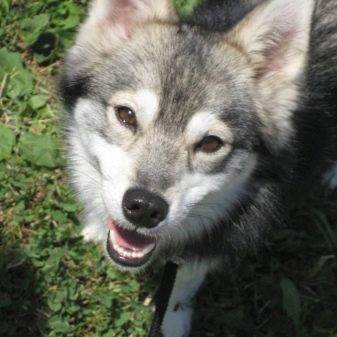
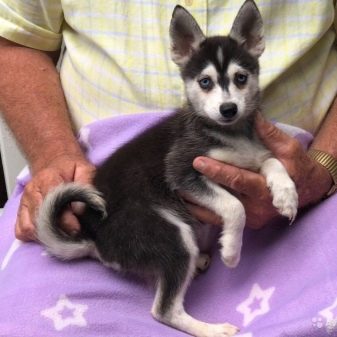
All these characteristics correspond to northern dogs, because it was from them that the described breed was derived. Kli-kai defects include a straight bite, bulging eyes or improperly set (close or far from each other). If you are offered such an animal, it is better to refuse it.
Individuals with gray or black coats will have a black outline. The ginger color is supported by a dark brown outline. The coat of dogs is painted in two shades - white and any additional: red, gray, black. There are individuals with a fawn color or deep brown color.

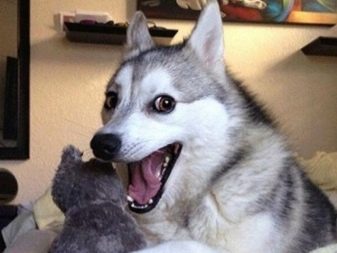
Any type is characterized by the location of white spots on the belly, chest, neck, limbs, partly on the muzzle and breeches. The mask on the face must be pronounced, contrasting. The pattern on the face is closed, symmetrical. Areas of the eyebrows, cheeks are visible, a longitudinal stripe on the bridge of the nose or forehead is possible.
The white color of the coat is included in the register of standard colors of the breed. Such an animal is purebred, but is not allowed to reproduce due to the novelty of the gene pool. Albino dogs are disqualified.
The soft, dense undercoat helps to keep the animal's coat in an elevated position. During the shedding period, a complete change of the undercoat occurs, which is the norm.
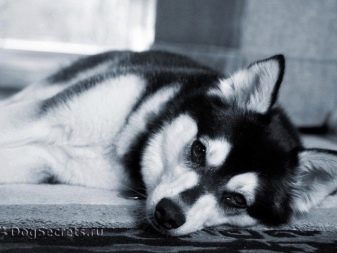
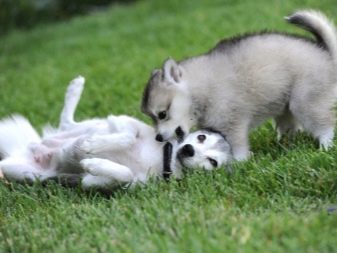
The Alaskan Klee Kai is officially registered with two types of coat.
- Shorthaired or standard... The hair is elastic, straight, well outlines the figure of the dog.
- Longhaired. The outer hair is longer and more elastic. The fluffy coat does not hide the contours of the body of the dogs. The greatest length of wool is in the area of the tail, paws, ears.
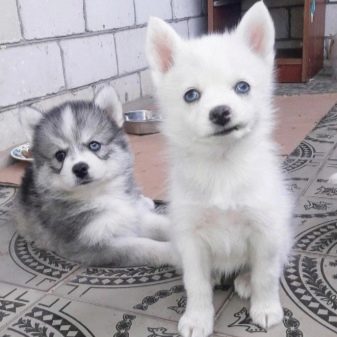
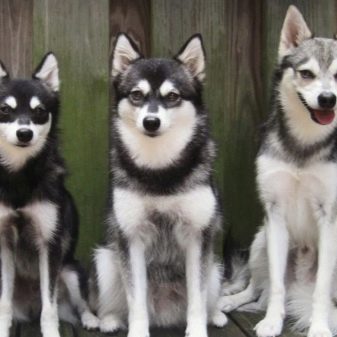
A dwarf pet's fur coat should show the contours of the pet's body, but not hide them in any way. Show animals are prohibited from any kind of haircuts, with the exception of hygienic haircuts between the pads and fingers of the animal.
The most important distinguishing feature of the Kli-kai from the northern brothers is a contrasting mask, the contours of which should be clearly visible. Compared to the husky, the miniature baby is more active, agile, energetic. Like its brethren, the animal is loyal to its owner, it can serve as a companion, watchman or guard.
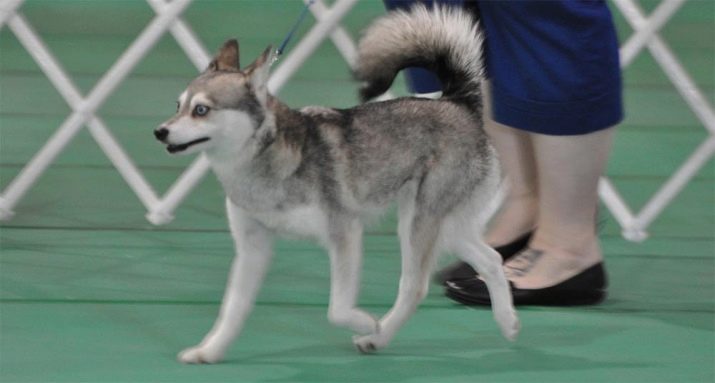
The Alaskan Klee-Kai is not a descendant of Laikas, just like the Malamutes, Siberian Huskies. This confusion has arisen due to the beginning of the use of malamutes and huskies as mounts. A miniature copy will not be able to drag a sled with a rider.
Alaskan huskies do not have any kindred roots with malamutes and were not introduced into Alaska from the shores of Russia. Siberian huskies are direct descendants of sled huskies and are related to Malumats.

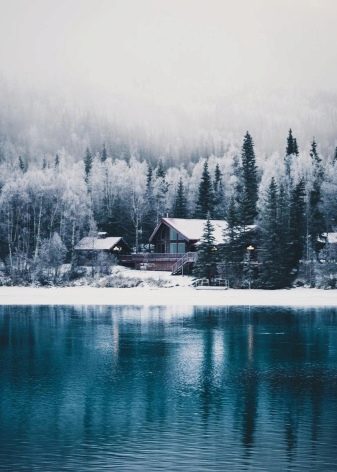
Remember that Siberian and Alaskan huskies are different breeds. The blood of the Alaskan breed and a little of the Siberian one flows in the veins of the Kli-Kai.
How to choose a puppy?
The Miniature Husky breed is rare and therefore expensive. These metrics lure scammers. To get a real Kli-kai puppy, you need to queue up. There are not so many official kennels in which Kli-kai are bred, which is why there is a queue.
If this does not bother you, then you can safely contact the kennel for a dog, having previously drawn up a sales contract. If the breeder does not want to provide you with all the necessary papers, you should be wary, most likely you are dealing with a scammer.
All existing nurseries work according to the same plan developed by Linda. There cannot be dashes in the pedigree of babies, since there is careful tracking and tight control over the breeding of the breed.
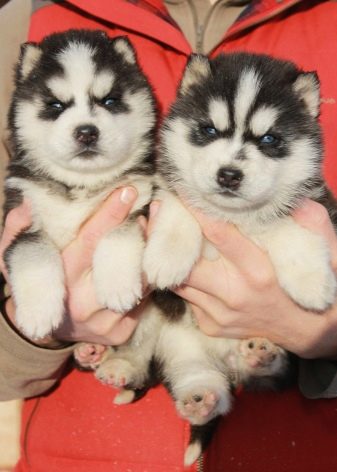
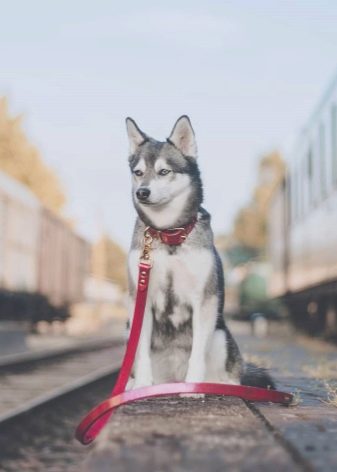
Every breeder is obliged to control the purity of the breed. A toddler who has reached 8 months of age is subjected to a metric and compared to a generally accepted breed standard. The following possible defects of clicks must be taken into account:
- wrong mask if the drawing is on the reverse side;
- bite problems;
- the color of the animal's coat.
All animals that did not go to the test are culling and forced sterilization.
Naturally, a pet that does not pass the test will sell for less than its purebred siblings, but the difference will not be significant.
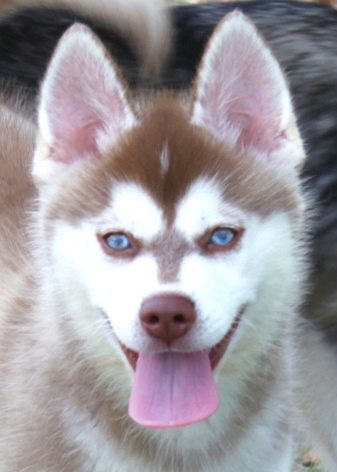

Considering how rare this breed is, as well as strict control over the quality of individuals, the price for mini-husky pets is understandable, fluctuating in the region of 300-350 thousand rubles.
Maintenance and care
The big plus of this breed is the lack of odor from the skin or coat of the dog. If the pet's nutrition is disturbed, then the first signal of an incorrect diet is precisely the appearance of a smell. The animal belongs to cleanliness, the dog will not swim in puddles or mud, dig in a garbage can. Despite the fact that the mini-husky licks itself like a cat, it is necessary to check the pet's coat for ticks and fleas.

Hair care
It is recommended to comb the wool regularly, especially after walking. If the pet is kept in the apartment all the time, then the wool is brushed once a week. To do this, you should purchase a massage comb. Puppies require daily brushing. In the fifth month of life, their coat becomes denser. At this time, weekly brushing will suffice.
The most important thing in care is regular cleaning of the dog from traces of dirt or dust. This can be done with a dry or damp cloth, shaking off the stained areas, or washing the animal. Pet baths should not be done often, so as not to dry out the dog's skin. Bathing is carried out in warm water using shampoos for short-haired or other breeds. If you have an albino dog, you can use tinted shampoos.
Bathing itself is desirable no more than three times a year. After the bath, the animal is allowed to dry naturally in a warm room. After drying, start brushing the wool. It is extremely neat to handle the tail. The best thing to do is when the pet has taken a recumbent position so that the dog does not experience unpleasant sensations.
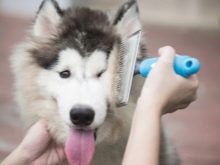
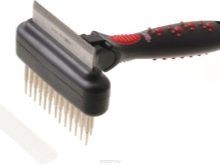
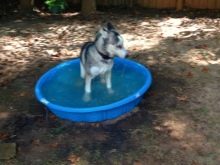
During the molt period, for combing the dog, it is used furminator, allowing you to quickly and easily collect a thick undercoat. Particularly noteworthy is the area between the pads on the paws, it is in this place that mats most often appear in dogs.
Clipping the nails is an important hygiene procedure for dogs that live exclusively in the house or walk on soft surfaces. Long claws prevent the animal from moving, which can lead to injury to the paws. Guillotine clippers are used to trim the claws. The cut is performed vertically, without affecting the area of the capillaries. The indent is 5 or more millimeters.
Ears are a vulnerable area of this breed. They need treat with cleaning lotion several times every weekintended for dog ears, use hydrogen peroxide or warm water. Processing is carried out using a cotton pad, gauze or cotton swab.
The eyes are also cleaned with products from veterinary pharmacies. It is necessary to wipe the dog's eyes after every walk. If you have mucus, tears or other discharge from them, you should consult a doctor.
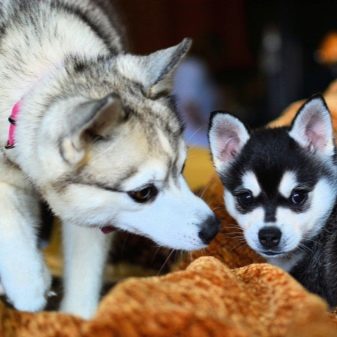
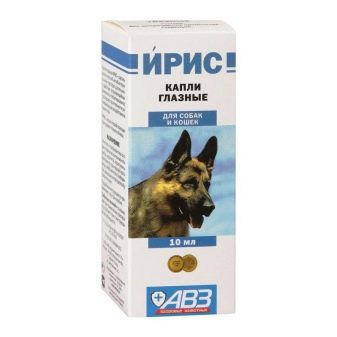
When choosing the type of food, you should pay attention to the condition of the pet's oral cavity. The formation of dental caries and tartar is not unnatural for this breed. A small dog should be taught to brush his teeth. You should not use an ordinary toothbrush for this, it is better to purchase a special dog toothbrush, like tooth powder. Brushing your teeth should be done once a week. If there are signs of tartar formation, your pet should be taken to a doctor to have it removed. This procedure is painless and passes quickly in the early stages.
The Kli-Kai dog is very active, playful, therefore it is recommended to carry out long walks or jogging with it. The pet must visit the street at least twice a day or be released into a closed yard. To keep the dog from getting bored, you can purchase various toys, including interactive ones.
Kli-kai has practically no serious hereditary genetic diseases. The strength of the pet's health is also due to the strict rules of dog breeding. The life span of miniature pets is on average 15 years, which is quite a lot for dogs. Kli-kaya can be attributed to long-lived breeds.
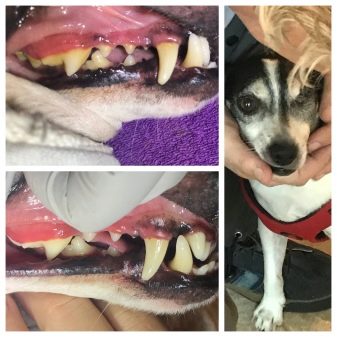
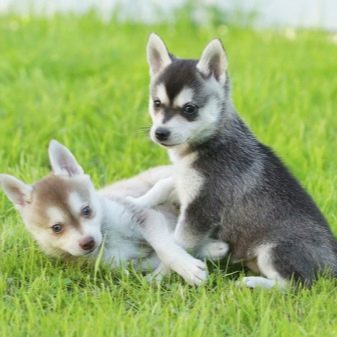
The small size of the dog makes it easy to keep it in the apartment, however, the dog can start to spoil furniture or gnaw on soft objects. To avoid this, you should have toys at home or teach the dog the command "no". Walking around the territory of the apartment cannot replace walking in the fresh air, and will also reduce the activity of the dog.
Nutrition
The little clique needs to be fed on schedule. Puppies under 5 weeks of age eat 5 times a day, and the older the dog gets, the less often he eats, while the amount of food increases. An adult feeds twice a day - in the morning and in the evening.
It is advisable to start feeding your pet in the morning, take the last meal late in the evening... It is advisable not to give anything to the dog at night. The bowl of food should stand for 20 minutes. This time is enough for the pet to eat everything, then the container with food should be removed. The dog should have access to drinking water throughout the day.
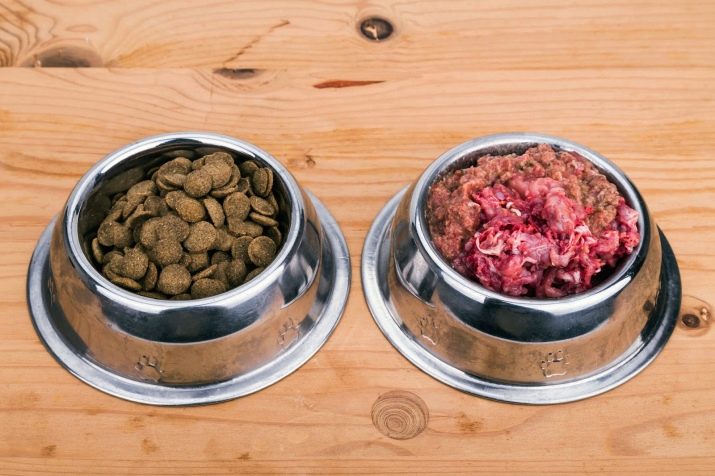
Before performing physical activity, you should not offer food to a small baby, otherwise he may vomit, volvulus of the stomach, intestines.
When feeding a dog with dry food, you should give preference only to super-premium segment... Suitable for any decorative dog or husky. The portions listed on the back of the package are guidelines only. Each dog has its own individual characteristics and requirements for the amount of feed consumed, associated with indicators such as activity, age, weight, and so on.
Dry food is a balanced diet. Adding additional vitamins or mineral complexes to the diet occurs only after consulting a veterinarian. The food is also matched to the age of the dog - you should not give the adult food for the puppies and vice versa. You should also feed your pet. one brand name for a long time.
It is not recommended to constantly change the manufacturer or mix feed of different brands, types and classes.

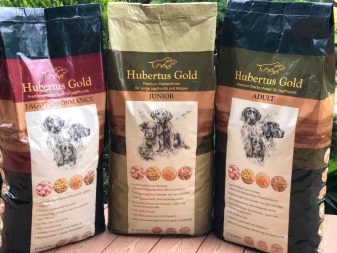
Before you give your dog natural products, you will have to make a menu for your pet. The food offered will even be balanced. It must include proteins, carbohydrates, fats, vitamins, trace elements.
What can you give:
- bird meat or beef, be sure to be without veins, bone fragments;
- vegetables;
- beef offal, entrails;
- boiled fish without bones;
- low fat kefir;
- hard cheeses;
- liver;
- fruits in small quantities;
- raw chicken eggs once a week;
- porridge (preferably rice or buckwheat).
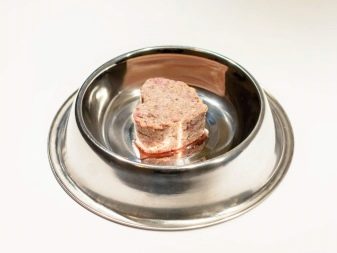
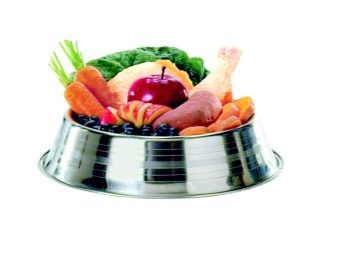
Any food you cook should be unsalted and free of seasonings or spices. The food that a person eats is not suitable for the Alaskan Kli-Kai.
What is prohibited:
- pork (any fatty foods cause diarrhea in Kli-kai);
- raw potatoes;
- cream products, milk;
- sweets, flour products;
- smoked meats;
- pickled vegetables;
- legumes;
- offal.
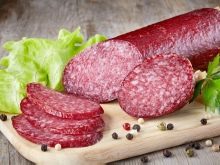
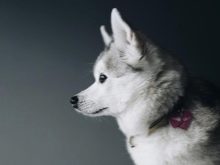

It is advisable to add vegetable fats and oils to the dog's food to maintain the optimal condition of the dog's coat and skin. It is also recommended to give her grass, roots. Vegetation has a beneficial effect on the functioning of the gastrointestinal tract.
You can alternate feeding natural foods with dry food. The change of diet should not occur on the same day; the selected ingredient should be mixed into food in small portions. The passage must be built so that it is smooth, otherwise it may affect the health of the pet.
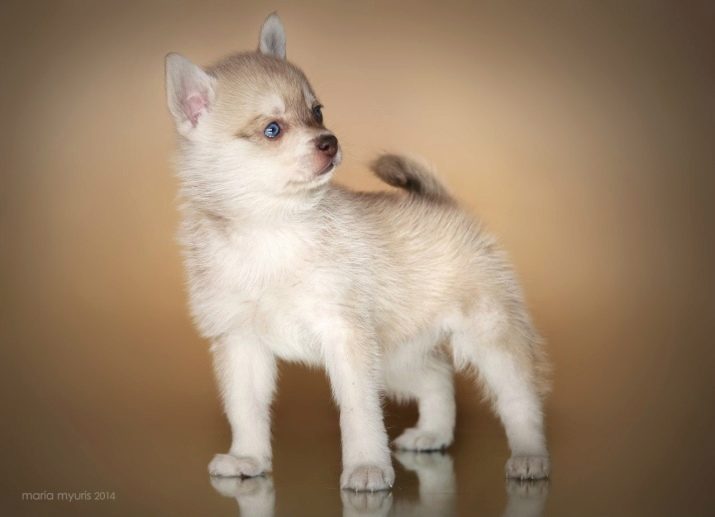
Education and training
Compared to its Siberian Husky brother, the Kli-kai's behavior can be called feline. The miniature baby is kind, trusting, the dog, just like a cat, knows how to wash its face with its front paws.
The dog is kind to all family members and other animals, does not show signs of aggression, distrust. With small children, the pet behaves carefully, showing tenderness.
With strangers, the dog behaves cautiously, but politely, and if the owner shows him signs of sympathy, the kli-kai will support this.
The breed has its own way of giving voice. Animals "chat", emit harmonious sounds, similar to howling, gurgling, wailing. The dog will never bark loudly. Barking is aggression that this breed is incapable of.
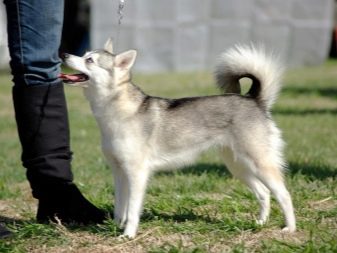

Despite its size, the baby needs training, control, physical activity. All puppies undergo a socialization course. Training will allow the dog to be more disciplined, to perform simple commands or easy tricks. Mental stress also has a positive effect on the dog. The breed is not considered shy, which allows the pet to be trained for the role of a guard.
The main skill of the breed is a companion dog, therefore, this animal should not be started by those who take a dog for the first time or people with an active lifestyle. The size of the dog makes it an apartment pet. If the pet is not given the due attention and care, then he may start to spoil objects in the apartment, shit in the wrong places.
The Alaskan Klee-Kai can be taught to swim, carry, aport, and others. Training should take place in a playful way. It is enough to take an hour for one command, the frequency of repetition of the passed material is 0 for three days.
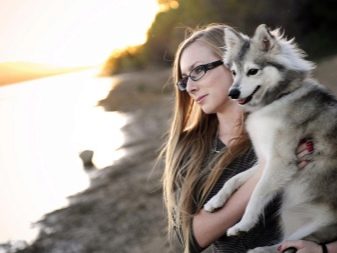
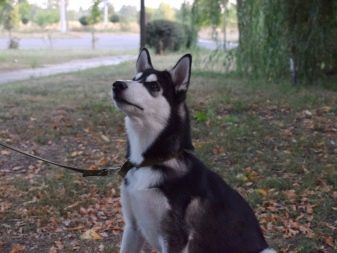
It is worth paying attention to the fact that this breed is very fond of digging holes. The dog is also able to hear the activity of underground animals, which will also cause the hole to be dug.
Suitable nicknames
Names for dogs are invented in accordance with their temperament, for example, Kipish, Puma, Joysik (from English joy - joy).
The following nicknames in the English manner are suitable for males: Bill, Day, Anri, Largi, Archon. Names can also be affectionate: Cupcake, Toy, Buddy.
For girls, beautiful graceful female names are selected: Jewella, Lucy, Anuka, Raquel, Gabi, Albi.
It is not necessary to give the animal foreign nicknames, you can come up with your own: Plush, Max, Bim and others.
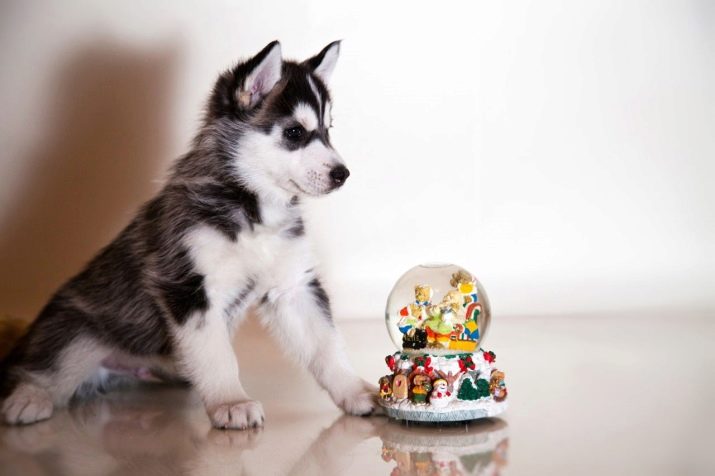
Owners of dogs of this breed speak positively of their pets. Small size makes it easy to keep them in homes, to walk. Animals get along with children, but they do not become nannies. Dogs do not emit annoying barking, behave playfully, but obey the owner the first time, if training has been carried out with them.
The price of a representative of this breed is a fat minus, as well as the difficulty of getting a dog. But the positive traits of character, the simplicity of caring for the pet smooth out this shortcoming.
The Alaskan Klee-Kai is a new breed of decorative animals, which is guaranteed to be successful all over the world.
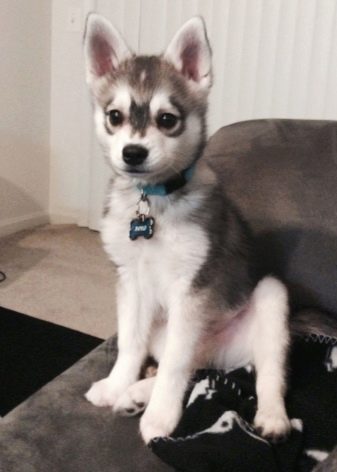

For interesting facts about the breed, see the next video.






































